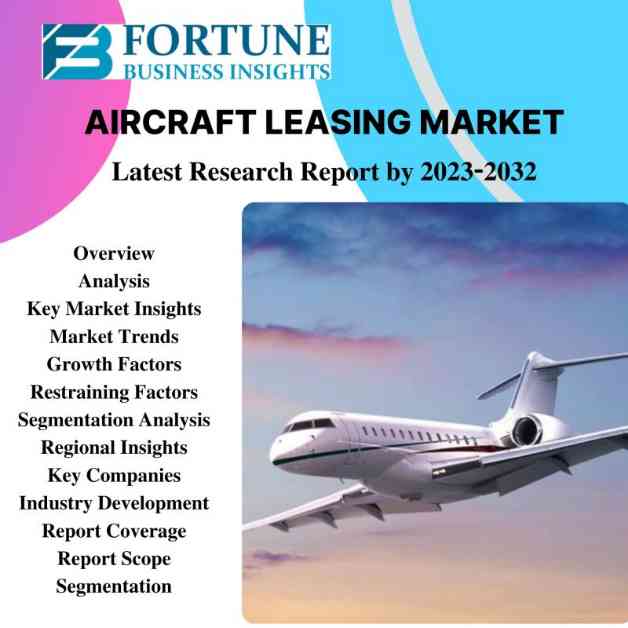The global aircraft leasing market is experiencing significant growth, with a projected value of USD 317.5 billion by 2030, showing a CAGR of 9.07% during the forecast period. Aircraft leasing involves a legal contract between a lessor and a lessee, where the lessor loans the aircraft to the lessee for a specific period in exchange for lease payments. This arrangement allows airlines to use aircraft without the upfront costs of purchasing them.
The demand for low-cost airlines is a key driver of the aircraft leasing market growth. Airlines often opt to lease aircraft instead of buying them, paying a monthly or yearly fee for their use. This practice enables airlines to operate with more flexibility and cost-effectiveness. The leasing firm purchases the aircraft and then leases it to the airline, which operates the aircraft under its own branding.
The market is segmented into narrow body and wide body aircraft, with the narrow body segment expected to dominate in 2021. This growth is fueled by the increasing demand for narrow-body aircraft, especially from budget airlines and Low-Cost Carriers (LCCs). As airlines look to expand their fleets and serve more routes, the demand for leased aircraft is expected to rise.
In terms of leasing arrangements, the dry lease segment is anticipated to experience significant growth. In a dry lease, the lessee is responsible for all operational and maintenance costs, making it a cost-effective option for airlines. This segment is particularly popular among low-cost and budget airlines, as it allows for greater control over operational expenses.
One of the key trends driving market growth is the global fleet expansion of low-cost carriers and budget airlines. These operators prefer leasing aircraft to minimize maintenance and operational costs, enabling them to serve a wider range of routes and connect rural and urban areas. This trend is particularly evident in Europe, where low-cost carriers are thriving amidst challenging conditions for traditional flag carriers.
In terms of regional dominance, Europe leads the aircraft leasing market, with significant players like Aercap driving growth in the region. Ireland, in particular, is a hub for aircraft lessors due to its favorable tax structure and business environment. The region has seen a rise in demand for leased aircraft, especially from low-cost carriers, leading to higher revenue growth rates.
In 2021, AerCap acquired GE Capital Aviation Services (GECAS) from General Electric, further solidifying its position as a market leader in aircraft leasing. The combined firm boasts a robust portfolio of technologically advanced and fuel-efficient aircraft, meeting the growing demand for such models worldwide.
Overall, the aircraft leasing market is poised for continued growth, driven by the demand for cost-effective and flexible leasing solutions. As low-cost carriers and budget airlines expand their fleets, the market is expected to see further opportunities for growth and development.







